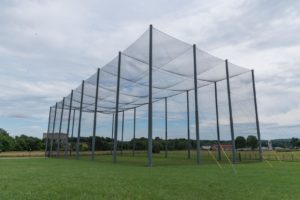
Image courtesy of the Virginia Tech Collegiate Times
Since Virginia is such a well known hotspot for drone activity, it’s no surprise the Virginia Tech Drone Racing Team is chomping at the aerial bit to take top prize next year at the 2020 Collegiate Drone Racing Association.
Created in 2016, the university’s nationally recognized squad is comprised of 15 engineering students and the team is always recruiting, holding regular practices and periodic open workshops.
“People really think it’s super nerdy,” VT aerospace engineering freshman Cason Kerrick told the VT campus news site, Collegiate News.
“If you can’t tell, most of us are just normal kids that like flight. There are so many different outlets for drones. I’ve been looking into it and that’s the next thing — like NASA and Boeing.”
Kerrick makes an excellent point – corporate and government orgs are starting to see drone racing circuits as fertile recruiting fields.
“Drone racing is a futuristic sport and a big draw for millennials and K-12 students with an interest in technology,” a Lockheed Martin spokesperson said regarding recent drone-racing events in Orlando.
“[Racers] will become future STEM professionals, drone pilots and engineers. Lockheed Martin recognizes the important role in helping to develop a workforce with skills to compete in a 21st century high-tech economy.”
In preparation for races that can exceed speeds of 70 mph, team members build racing drones from the ground up – designing everything from engines to battery arrays to software and flight controllers.
Thanks to the university’s commitment to drone tech, team members use a designated 36,000-square-foot drone park complete with 85-foot tall safety netting – one of the largest in the U.S.
“One of our goals is to get big enough and funded enough to be able to host a national race,” team member Michael Zerr said. The team has already qualified for several national races and sees 2020 as a prime opportunity to take the top prize.
Virginia Tech researchers are no strangers to drone innovation. For example, a team is currently working with the FAA to determine what safety risk a falling drone may pose to people during direct fly-overs. Researchers are conducting the tests at the Mid-Atlantic Aviation Partnership’s Unmanned Aircraft Systems test site program; one of seven U.S. test sites.







